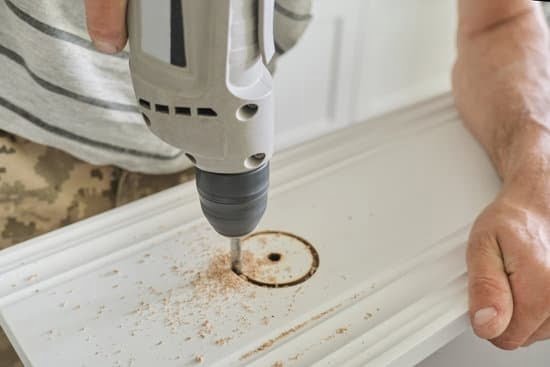Woodworking light plays a crucial role in creating a conducive environment for woodworking projects. Proper lighting is essential for accuracy, safety, and overall project quality. Without adequate lighting, woodworkers may struggle to see details clearly, leading to mistakes and potential accidents. This article explores the significance of proper lighting in woodworking and how it can impact the outcome of your projects.
Understanding the different types of woodworking lights available is key to choosing the right one for your workspace. From overhead lights to task lighting options, each type serves a specific purpose in illuminating your work area. Task lighting, in particular, offers targeted illumination for intricate tasks, ensuring that every detail is well-lit and visible. By selecting the appropriate woodworking light for your needs, you can enhance your productivity and precision.
In addition to discussing the benefits of using task lighting for woodworking projects, this article also provides tips on choosing the right woodworking light for your workspace. Whether you prefer adjustable LED lights or traditional fluorescent fixtures, understanding your options can help you create an optimal working environment. Furthermore, DIY options for creating custom woodworking light fixtures are explored, offering creative solutions to tailor your lighting setup to suit your unique preferences and requirements.
Understanding the Different Types of Woodworking Lights Available
Woodworking lights come in various types, each serving a specific purpose to illuminate your workspace effectively. Understanding the different options available can help you determine the best lighting solution for your woodworking projects. One common type of woodworking light is overhead lighting, which provides overall illumination to your workspace. These fixtures are typically ceiling-mounted and evenly distribute light throughout the area, making it easier to see details in your workpieces.
Another type of woodworking light is task lighting, which focuses on illuminating specific work areas or tools. Task lighting fixtures can be placed directly above your workbench or attached to machinery such as saws or lathes. This type of lighting is essential for highlighting details and ensuring precision in your woodworking tasks. Additionally, task lighting helps reduce eye strain by providing targeted illumination where needed the most.
Natural lighting is also a crucial aspect of woodworking, as it offers the most accurate representation of colors and textures in wood materials. Positioning your workspace near windows or using skylights can help take advantage of natural light sources during daylight hours.
Combining natural light with artificial lighting fixtures can create a well-lit environment that enhances visibility and reduces shadows while working on intricate woodworking projects. By understanding the different types of woodworking lights available, you can make informed decisions on how to optimize your workspace for improved visibility and productivity when crafting wood creations.
Benefits of Using Task Lighting for Woodworking Projects
Proper lighting is essential when it comes to woodworking projects, as it can greatly impact the accuracy and safety of your work. One of the most effective types of lighting for woodworkers is task lighting. Task lighting provides focused illumination on the specific area where you are working, ensuring that you have enough light to see details clearly and without straining your eyes. Here are some benefits of using task lighting for woodworking projects:
- Improved Visibility: Task lighting directs a concentrated beam of light onto your workspace, allowing you to see intricate details and make precise cuts with ease.
- Reduced Eye Strain: By illuminating the area where you are working, task lighting helps reduce eye strain and fatigue, allowing you to work comfortably for longer periods without compromising on quality.
- Enhanced Safety: Proper lighting is crucial for safety in woodworking. Task lighting ensures that you can see potential hazards clearly, reducing the risk of accidents or injuries while working with power tools or sharp equipment.
Task lighting comes in various forms, including clamp-on lights, overhead lights, and adjustable desk lamps. When choosing task lighting for your woodworking projects, consider factors such as brightness levels, color temperature (warm vs cool light), adjustability, and energy efficiency. Investing in a high-quality woodworking light will not only improve the quality of your work but also create a more comfortable and productive workspace.
Remember that having the right woodworking light is not just about convenience; it plays a crucial role in enhancing your craftsmanship. Whether you are carving intricate designs or assembling furniture pieces, proper task lighting can make a significant difference in the outcome of your projects. So next time you embark on a woodworking project, make sure to prioritize good lighting to achieve superior results.
Tips for Choosing the Right Woodworking Light for Your Workspace
Proper lighting is essential for any woodworking project to ensure precision, accuracy, and safety. Selecting the right woodworking light for your workspace can make a significant difference in the quality of your work. Here are some tips to help you choose the best lighting solution for your woodworking area:
- Consider the brightness: When choosing a woodworking light, consider the brightness levels required for your projects. Opt for LED lights that provide bright and consistent illumination without generating heat that could potentially damage delicate wood materials.
- Adjustability is key: Look for woodworking lights that offer adjustable features such as pivoting heads or flexible arms. This will allow you to direct the light exactly where you need it, whether on a specific tool or workpiece.
- Evaluate the color temperature: The color temperature of a light source can greatly affect how colors appear in your workspace. For woodworking tasks, it’s ideal to choose lights with a color temperature between 4000-5000 Kelvin, as this range provides a natural and neutral white light that mimics daylight.
Additionally, when selecting a woodworking light, take into account factors such as energy efficiency, durability, and ease of installation. Investing in a high-quality woodworking light that meets your specific needs will not only enhance your work environment but also improve the overall quality of your woodworking projects.
By carefully considering these tips and assessing your individual requirements, you can choose the right woodworking light that will optimize visibility, improve accuracy, and create a safe working environment in your workshop. With proper lighting in place, you can achieve better results in your woodworking endeavors while minimizing errors and reducing risks associated with poor visibility or inadequate illumination.
DIY Options for Creating Custom Woodworking Light Fixtures
Proper lighting is essential in woodworking to ensure accurate cuts, precise measurements, and overall safety in the workshop. While there are various commercial options available for woodworking lights, some woodworkers prefer to create custom fixtures tailored to their specific needs. Here are some DIY options for creating custom woodworking light fixtures that can enhance your workspace:
LED Strip Lights
One popular choice among woodworkers for custom lighting fixtures is LED strip lights. These versatile and energy-efficient lights can be easily installed under shelves or cabinets to provide direct, focused lighting on the work surface. LED strip lights come in various lengths and colors, allowing woodworkers to customize the illumination based on their preferences.
Pendant Lights
For a more decorative touch in the workshop, woodworkers can opt for pendant lights as custom fixtures. Pendant lights hang from the ceiling and can be adjusted in height to provide targeted overhead lighting. By choosing stylish pendant light fixtures with adjustable arms or shades, woodworkers can achieve both functionality and aesthetic appeal in their workspace.
Shop-Made Lamps
Woodworkers with a flair for craftsmanship may enjoy building their own shop-made lamps as custom woodworking light fixtures. Using materials like wood, metal, or acrylic, they can design unique lamp bases and shades that complement their workshop decor. By incorporating features like adjustable arms or dimmable settings, these custom lamps can offer flexibility in lighting angles and intensity for different woodworking tasks.
By exploring DIY options for creating custom woodworking light fixtures, woodworkers can personalize their workspace to meet their specific lighting needs while adding a touch of creativity and functionality to their workshop environment. Whether it’s using LED strip lights, pendant lights, or shop-made lamps, having customized lighting solutions can enhance both the efficiency and enjoyment of woodworking projects.
How Proper Lighting Can Improve Accuracy and Safety in Woodworking
Proper lighting plays a crucial role in the world of woodworking, not only enhancing the aesthetics of the workspace but also significantly impacting the accuracy and safety of woodworking projects. When it comes to woodworking, having adequate lighting can make all the difference in achieving precise cuts, accurate measurements, and ensuring that safety protocols are followed diligently.
One important aspect of proper lighting in woodworking is minimizing shadows and glare, which can distort your view of the workpiece and potentially lead to mistakes or accidents.
In addition to visibility, good lighting can also improve overall focus and productivity during woodworking tasks. Bright, focused lighting helps woodworkers concentrate on intricate details, intricate joinery, or delicate finishing work with ease. By reducing eye strain and promoting better visual clarity, proper lighting enables woodworkers to maintain a high level of accuracy throughout their projects. Investing in quality woodworking lights can ultimately save time and resources by preventing errors or rework due to poor visibility.
In terms of safety, adequate lighting in a woodworking environment is essential for preventing accidents and injuries. Proper illumination can highlight potential hazards such as sharp tools, protruding objects, or uneven surfaces that may not be easily noticeable in dimly lit conditions.
By optimizing visibility around the workspace using dedicated task lights or overhead fixtures specifically designed for woodworking applications, woodworkers can create a safer working environment where risks are minimized. Remembering that an essential aspect to ensure safe practices while working is bright and well-located
Case Studies
Proper lighting is crucial in woodworking, as it not only enhances visibility but also improves accuracy and safety in handling tools and materials. One particular type of woodworking light that has gained popularity among woodworkers is the LED workbench light. These lights are known for their energy efficiency, long lifespan, and bright illumination, making them ideal for illuminating workspaces effectively.
One real-life example of a woodworker enhancing their workstation with lighting involves installing a linear LED strip light under the shelves above the workbench. This simple yet effective setup provides direct lighting onto the work surface, eliminating shadows and improving visibility while working on intricate woodworking projects. The woodworker noted a significant improvement in their ability to make precise cuts and joints after implementing this lighting solution.
In addition to overhead lighting solutions, some woodworkers have incorporated clamp-on LED task lights into their workshops. These portable lights can be easily adjusted and moved around to provide focused illumination exactly where it is needed.
By strategically placing task lights near power tools or intricate detailing areas, woodworkers can improve their overall workflow efficiency and reduce the risk of accidents due to poor visibility. Investing in quality woodworking lights is not only a practical decision but also a safety measure that should not be overlooked in any woodworking workshop scenario.
| Woodworking Light Example | Benefits |
|---|---|
| LED Workbench Light | Energy-efficient, long lifespan, bright illumination |
| Linear LED Strip Light | Eliminates shadows, improves visibility for precise cuts and joints |
| Clamp-on LED Task Light | Portable, adjustable light source for focused illumination where needed |
Maintenance and Care Tips for Keeping Your Woodworking Lights in Optimal Condition
Proper maintenance and care for woodworking lights are essential to ensure they continue to provide adequate illumination in your workspace. Dust and debris can accumulate on the light fixtures over time, diminishing their brightness and effectiveness. It is recommended to regularly clean your woodworking lights using a soft, dry cloth to remove any build-up that may be blocking the light output.
In addition to keeping the fixtures clean, it is important to inspect the bulbs regularly for any signs of wear or damage. Replace any burnt-out bulbs immediately to maintain optimal lighting conditions in your woodworking area. Keeping a few extra bulbs on hand can also be helpful so you can quickly replace them as needed without interrupting your projects.
Another crucial aspect of maintaining woodworking lights is checking the wiring and connections for any signs of fraying or damage. Faulty wiring can not only affect the performance of the lights but also pose a safety hazard in your workshop. If you notice any issues with the wiring, it is best to have them repaired by a qualified electrician to prevent any accidents related to electrical malfunctions.
| Importance of Maintenance | Tips for Care |
|---|---|
| Regular cleaning prevents dimming | Use a soft cloth to wipe off dust |
| Check bulbs for wear and tear | Replace burnt-out bulbs promptly |
| Inspect wiring for damage | Repair faulty wiring immediately |
Conclusion
Proper lighting is a critical element in any woodworking workspace, with the right woodworking light significantly impacting the quality and precision of projects. Whether you are a novice or experienced woodworker, investing in good lighting can make a significant difference in your work efficiency and final results. By illuminating your workspace effectively, you not only enhance visibility but also reduce eye strain and fatigue during long hours of woodworking.
One key benefit of using task lighting for woodworking projects is the ability to focus light on specific areas where detailed work is required. This level of targeted illumination helps in achieving greater accuracy and intricacy in cuts, measurements, and finishing touches. Additionally, having adequate lighting can also contribute to improved safety by minimizing the risk of accidents that may arise from poor visibility or shadows obstructing your view.
In conclusion, the impact of good lighting on woodworking projects cannot be overstated. From enhancing accuracy and safety to reducing eye strain and fatigue, proper lighting is a fundamental aspect of creating high-quality woodwork pieces.
Whether you choose ready-made options or opt for DIY custom fixtures, prioritizing adequate illumination in your workspace will undoubtedly elevate your woodworking experience and ultimately result in better outcomes. Investing in quality woodworking lights is an investment in both the craftsmanship of your projects and your own well-being as a woodworker.
Frequently Asked Questions
How Many Lumens Do I Need for a Woodshop?
The number of lumens needed for a woodshop depends on the size and layout of the space. Generally, a woodshop will require between 50 to 100 lumens per square foot. This ensures adequate lighting for tasks such as measuring, cutting, and woodworking projects.
What Type of Light Is Best for a Workshop?
The best type of light for a workshop is LED lighting. LED lights are energy-efficient, long-lasting, and provide bright, clear illumination. They also emit very little heat, making them safe to use in a workshop setting where flammable materials may be present. Additionally, LEDs can be easily dimmed or adjusted to suit different tasks.
What Is the Best Light for Sanding Wood?
The best light for sanding wood is natural daylight or LED lighting with a color temperature of around 5000-6500K. This color temperature provides a cool white light that closely resembles natural daylight, allowing you to see the true colors and textures of the wood as you sand.
Avoid warm-toned lights as they can distort the appearance of the wood.

Hi everyone! I’m a woodworker and blogger, and this is my woodworking blog. In my blog, I share tips and tricks for woodworkers of all skill levels, as well as project ideas that you can try yourself.




